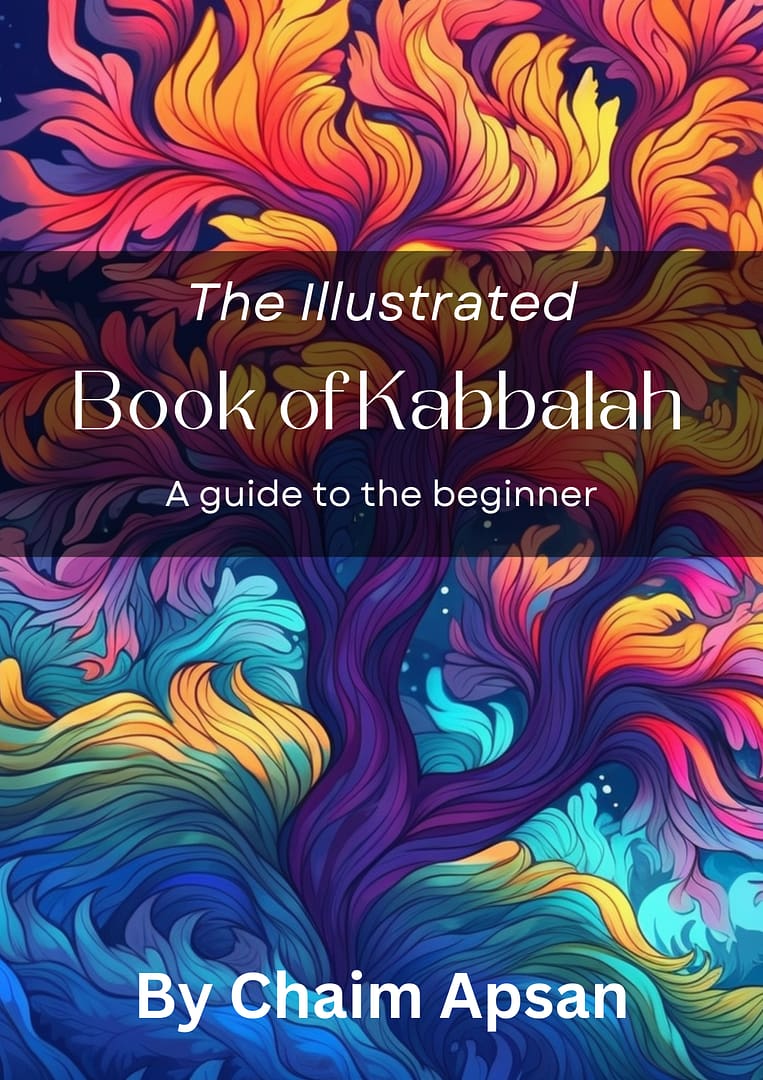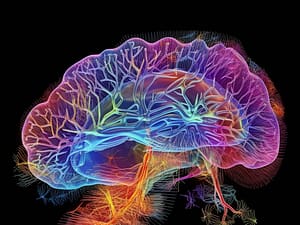Most people are aware of the 13 Attributes of Mercy that we say many times on Yom Kippur but here in this article we will learn a few of their Kabbalistic secrets
We all yearn to establish a close connection with Hashem who is the source of good, recognizing that all our desires and aspirations emanate from Him. It’s a fundamental understanding that whatever we seek, we ultimately derive from Hashem.
The beauty of this idea lies in the realization that once we draw near to Hashem, a profound awareness dawns upon us—we come to comprehend that our true need is simply this connection which is based on compassion at the highest level of the Sephira of Keter (crown). This is the level of the 13 attributes of mercy and it’s the linchpin that renders all other needs obsolete.
Without this level of compassion which transcends everything, we could simply not exist.
Rav Chaim Vital explains that were it not for the fact that Hashem has compassion on all of us, a person would sin and would immediately die because the channels of vitality from the higher worlds would stop flowing to him.
In this intricate dance of life, every challenge and desire is like a cryptic message motivating us to make the effort and draw closer to Hashem. Yet, despite all the noise, it’s crucial to discern that the ultimate fulfillment lies not in acquiring external elements of livelihood, but in fostering that intimate bond with Hashem.
Now, the question arises: How do we connect with Hashem and reach this level of compassion of the 13 attributes of mercy?
Our sages wisely caution that approaching Hashem is akin to approaching a consuming fire—powerful and transformative. The danger lies in being engulfed, losing our identity in the process.
Preserving our unique identity while forging this connection is a delicate balance. The Gemara offers two paths, both sharing a common beginning but diverging in their solutions.
For now, let’s delve into one of these paths.

Emulating God by Emulating His 13 Attributes of Mercy
The Gemara teaches us to mirror Hashem’s traits of mercy and grace, as encapsulated in the profound concept of the 13 attributes of mercy. Delving into the directive “Just as He is merciful, so should you be merciful; just as He is gracious, so should you be gracious,” we find a pathway to draw closer to God.
Throughout the pivotal 10 days of Teshuva of Tishrei, our focus is on utilizing this opportune time to forge a connection with Hashem, specifically through the lens of the thirteen attributes of mercy—the essence of this period.
Let’s first unravel the notions of “being merciful and gracious”, knowing that these principles extend to all 13 attributes of mercy. The critical question at hand is deciphering spiritual proximity and distance.
Does time and space affect my relation to Hashem?
Does Hashem have a confined existence?
The truth unfolds: Hashem is omnipresent. There is no place where Hashem does not exist. Thus, the concept of moving away from Hashem in a physical sense is moot.
So, how can one be considered close or far from Hashem? Rav Ashlag, referencing the Gemara’s discussion on mirroring Hashem’s mercy, illuminates that this distinction is rooted in character rather than physical distance. Proximity to Hashem is defined by the trait of closeness. That is, you are close to Him if you emulate him. You attract what you are. And “you are” how you think, feel, speak and act.
Consider this analogy: Two individuals sit side by side on a bus. One has bad and aggressive tendencies, and it consumes his thoughts entirely. Despite physical proximity, the mental chasm between him and Hashem is vast. Conversely, if you share the same bad and aggressive tendencies, an immediate connection is felt with like-minded individuals worldwide.
This analogy illustrates that physical closeness is inconsequential; it is the alignment of character traits that determines true proximity to Hashem. The same holds true for internal qualities, surpassing external actions and activities. The essence of one’s character defines closeness or distance in the spiritual realm, echoing the foundational principle of the Attributes.
There are 2 forms of the 13 attributes of Mercy
The 13 Attributes of Mercy are derived from the Torah, specifically from the book of Shemot 34:6-7. These attributes are often recited as part of Jewish liturgy of many communities, particularly during times of Teshuva and seeking forgiveness. This is what we are required to emulate if we are to merit closeness to Hashem because he acts Midah Keneged Midah (a measure for a measure) with us.
Let’s break down each attribute in conversational speech:
- El (God): This emphasizes Hashem’s power and greatness.
- Rachum (Compassionate): This trait alludes to deep compassion, understanding, and empathy despite our failings.
- V’chanun (Gracious): This attribute means Hashem extends kindness and favor even when it’s not deserved.
- Erech (slow [to anger]: Hashem is slow to anger, also even mitigating the punishment by distributing over a long period of time.
- Apayim (long suffering): Hashem has incredible patience and is not easily angered.
- V’Rav Chesed (Abundant in kindness): In this attribute, Hashem is depicted as overflowing with kindness and goodwill.
- V’Emet (Truth): He who is consistently truthful and reliable.
- Notzer Chessed (Preserver of kindness): Hashem remembers our acts of kindness for the future as a way of sweetening punishment.
- La’alafim (for thousands of generations): Even for thousands of generations.
- Nose avon (Forgiver of iniquity): Hashem is willing to forgive wrongdoing, offering a chance for redemption and completely erasing sins that are intentional.
- Va’fesha (Forgiver of transgression): Similar to the previous attribute, this emphasizes Hashem’s willingness to forgive and overlook even outright rebellion against Him.
- V’chata’ah (Forgiver of sin): Here Hashem also overlooks unintentional sins.
- V’nakei (Cleanser): After all is said and done, Hashem cleanses a person of all stains of sins (Tumah)
In essence, when these 13 attributes of mercy are recited, it’s a recognition and plea for God’s mercy, forgiveness, and compassion—a reminder of the divine qualities that provide a pathway to individual redemption and renewal.
While the attributes we just saw were the “external” part of them, the second form is brought in the book of Micah and the Zohar teaches that they were said when the “internal” part of them was needed when the Jewish People were in dire straits. This is a free translation:
- Mi El Kamocha – Who is a God like you
- Noseh Avon – Pardoning iniquity
- V’Over Al Pesha – Passing over transgression
- L’She’erit Nachalato – To the remnants of His inheritance
- Lo HeChezik La’ad Apo – Not retaining anger forever
- Ki Chafetz Chessed Hu – Delighting in steadfast love
- Yashuv Yerachamenu – Showing mercy
- Yichbosh Avonoteinu – He will tread our iniquities underfoot
- V’Tashlich Bimtzulot Yam – He will cast all our sins into the depths of the sea
- Titen Emet L’Yaakov – You will show faithfulness to Yaakov
- Chessed L’Avraham – Unswerving kindness to Avraham
- Asher Nisbatah La’avoteinu As you have sworn to our ancestors
- Mimei Kedem – from the days of old
These are the Kavanot of the order of the 13 Attributes of Mercy together which we are supposed to be mekaven when we say them:



The 13 Attributes and Moshe Rabbeinu
When Moshe Rabbeinu experienced the revelation of the 13 attributes of mercy, it wasn’t just a celestial display; it was an incredible gift—an invaluable key to connecting with Hashem.
Hashem, in His wisdom, declared, “These are my traits.” Moshe learned that by not merely admiring these qualities but by internalizing and embodying them, one forges a direct connection with Him. It’s a transformative process wherein these attributes become second nature, defining one’s character. In this transformation lies the essence of connection to the Creator.
Conversely, the inverse holds true. Those who embody traits opposite to these divine attributes find themselves distanced from Hashem.
The aspiration is to mirror Hashem, becoming a living manifestation of His presence in the world. Consider the example of someone consistently exuding compassion. Whether offering emotional or physical support, their actions are perceived as an extension of Hashem’s benevolence. Those they aid recognize this connection, viewing their benefactor as a tangible revelation of Hashem’s goodness in the world. In this way he becomes a conduit of these 13 attributes of mercy.
Being a conduit for Hashem’s 13 attributes of mercy is the epitome of spiritual achievement—the “ultimate goal.” This level, attained by prophets, forefathers, Moshe, and subsequent Tzaddikim, is the pinnacle of human potential. It’s the ultimate aspiration and ultimate level in Avodat Hashem.
As we delve deeper into the attributes of Hashem, we unlock the pathway to a profound connection with Him. Knowledge of these attributes isn’t merely academic; it’s the roadmap guiding us toward the transformative journey of embodying Hashem’s essence and becoming a radiant manifestation of His divine qualities in the world.
Knowing How to Truly Show the Attribute of Mercy
What precisely defines the 13 attributes of mercy?
Consider this scenario: You have a child fervently crying for candy, unaware that consuming it could lead to an allergic reaction and a trip to the hospital. In this instance, true mercy lies in withholding the candy. While the child throws a tantrum, the compassionate choice is to prioritize their well-being over immediate gratification.
It’s crucial to understand that mercy isn’t always synonymous with kindness. In Kabbalistic teachings, mercy is depicted as a delicate balance—not excessively judgmental, nor overly indulgent, but harmoniously centered.
Navigating situations that demand mercy can be complex.
Take the example of encountering someone seeking financial aid, claiming it’s for sustenance, yet you suspect they may be struggling with drug or alcohol addiction. The Gemara advises giving money when someone claims it is for food without probing further, recognizing the potential urgency to prevent starvation. However, discerning when to extend mercy is challenging, especially when faced with uncertainties (in this case it’s better to just give the person food, if possible).
True mercy requires a nuanced understanding of each circumstance. It’s an intricate dance between compassion and wisdom. Despite our earnest desire to be merciful, the challenge lies in deciphering the genuine manifestation of mercy in any given situation. This complexity underscores the depth and intricacy of embodying the 13 attributes of mercy in our daily lives.
It is, after all, a very high level, rooted in the Sephira of Keter.

The complexity of true mercy unveils itself through numerous questions and challenging situations, making it clear that being truly merciful is far from easy. It’s a nuanced quality that requires a deep understanding and thoughtful application.
In essence, having mercy is not just about responding to specific situations—it’s a state of being, a fundamental characteristic that permeates one’s outlook and interactions. It’s the internal wellspring from which genuine acts of compassion flow. Thus, the true measure of mercy extends beyond the external challenges and uncertainties, reaching into the core of an individual’s character.
While the application of the 13 attributes of mercy may be riddled with questions and difficulties, the recognition and cultivation of the internal attribute of mercy serve as the compass guiding one through the intricate terrain of compassionate living. This internal disposition, when authentically embraced, becomes the source of authentic and meaningful acts of mercy in the external world.
Nevertheless, when in doubt of whether to withhold mercy or concede it, the general consensus among the Rabbis is to be merciful and to let Hashem take hold of the situation.
Reward for Your Generosity is Granted According to the Effort Made
Let me share a story to illustrate this point more vividly.
Imagine a man approaches a wealthy individual, claiming that his father urgently needs twenty thousand dollars for a life-saving operation. The affluent man, moved by compassion, scrambles to collect funds from various sources. He invests genuine effort in securing the money, only to discover later that the entire story was a fabrication—the man’s father wasn’t in the hospital, and there was no imminent operation.
In another scenario, a person genuinely in need of funds for a critical operation approaches another wealthy individual. Without hesitation, this second wealthy man instructs him to go to his secretary to receive a check. It’s a swift and straightforward process, as the cause is genuine and immediate.
Now, the question arises: who merits more reward in the eyes of the divine? Is it the one who exerted significant effort, albeit for a false cause, or the one who effortlessly gave for a real and pressing need?
While both individuals receive reward, the distinction lies in the depth and sincerity of their actions. It prompts us to contemplate the nature of reward in acts of mercy. The lesson here is that not all acts of kindness and mercy are equal. The internal disposition to feel mercy is one facet, but how that mercy is translated into tangible actions in the external world adds another layer of complexity.
This narrative resonates with a broader spiritual truth—that, within the realm of kindness and mercy, there exist varying degrees of merit. It challenges us to navigate the intricate balance between internal compassion and the external expression of that mercy. Therefore, discerning the authenticity of a cause and executing mercy in practice is a challenging task, requiring both a compassionate heart and a discerning mind.
Being Merciful to the Merciful – the 13 attributes of mercy in practice
Let me underscore another crucial aspect: the question of whom we extend our mercy to holds profound significance.
Consider the paradox where some individuals display deep compassion for animals, embracing and cherishing them, while their empathy for fellow human beings is sorely lacking. This phenomenon prompts reflection on the allocation of our mercy.
A poignant tale involving a certain Rabbi (I forgot his name) in Germany illustrates this point. Observing a woman in Berlin affectionately kissing her dog, this Rabbi foresaw a dark omen—he sensed that in this place, many people would face tragedy. When questioned by his students, he responded, “The Torah teaches that those who are capable of killing people are those who lavish most affection on animals.”
This doesn’t imply that every animal lover is predisposed to violence against humans.
Rather, it highlights the importance of directing our innate sense of mercy to the right places. The Gemara wisely cautions, “Those who have mercy on those that are cruel, will be cruel to those who are merciful.”
In Jewish law, there’s a prioritized order for charity.
Those closest to you, both physically and emotionally, should hold the first place in your heart. This begins with your immediate family—parents, children, spouse, siblings. Those directly connected to you form the innermost circle of your compassion. This is where mercy should be channeled first and foremost. Afterwards, there are the members of our communities, then of the city and then of the world.
While extending our circle of compassion is admirable, it’s paramount to ensure that those closest to us receive the attention and care they need. Emotional support, often overlooked, is a critical form of mercy.
Sadly, there are instances where individuals provide financial assistance but neglect the emotional needs of their own family members, leaving them yearning for love and understanding.
In essence, expressing the 13 attributes of mercy goes beyond emotions—it signifies balance.
The key lies not only in feeling compassion but also in channeling it toward the right recipients, starting with those nearest and dearest to us. This practice not only strengthens our bonds with family and community but also affects how Hashem deals with us.













